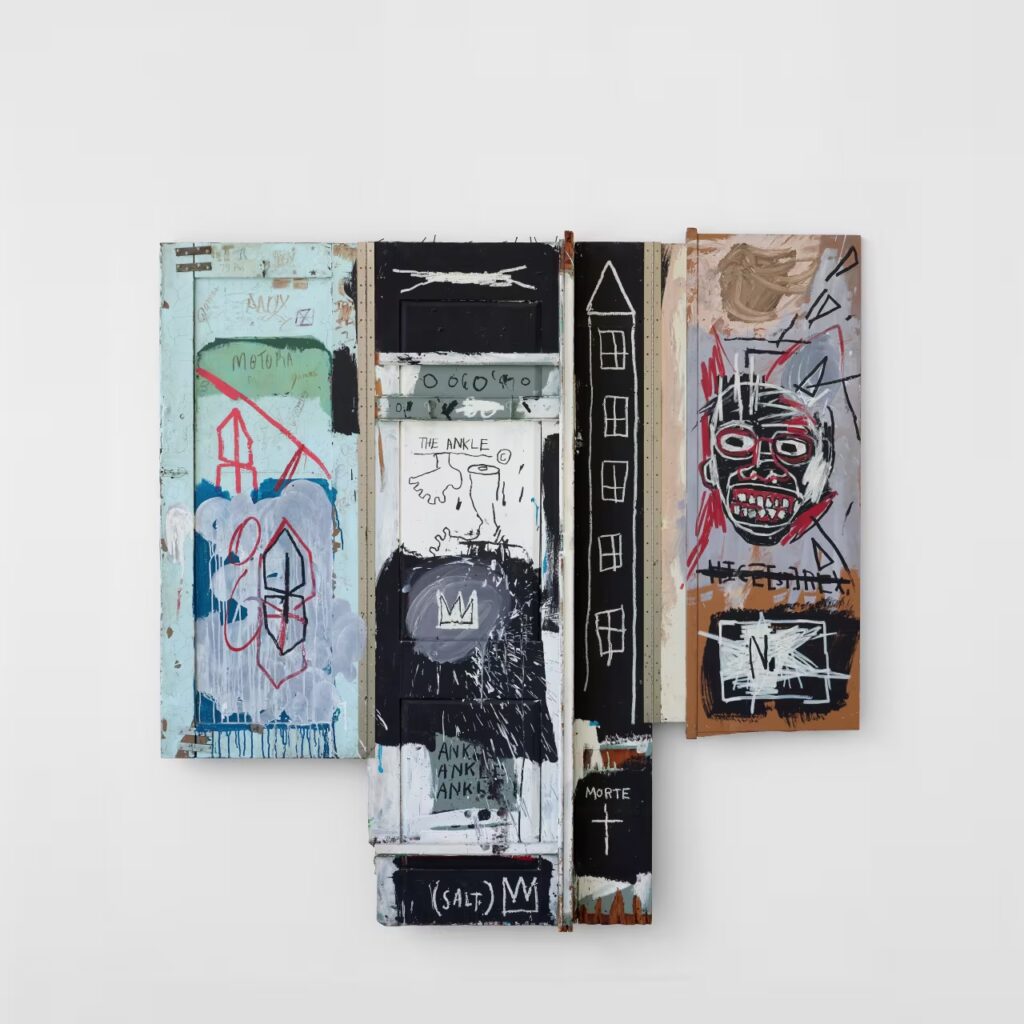The world of art is no stranger to volatility. Historically, the art market has thrived in periods of prosperity and struggled during times of global uncertainty. However, as we move further into the 21st century, the art world is witnessing a new and somewhat paradoxical phenomenon: amidst rising global turmoil and increasing taxes on the ultra-wealthy, the art market is becoming more predictable and, in some ways, more accessible for the elite. This tilt towards predictability, however, brings with it a new set of challenges, opportunities, and implications for artists, collectors, and investors alike.
The recent sale of Jean-Michel Basquiat’s “Portrait of an Artist as a Young Derelict” at Sotheby’s for a relatively modest 16 million euros serves as a poignant example of how these changes are manifesting. Once known for its capacity to shock and awe with eye-watering sums, the art market is now operating within an increasingly predictable framework, where even high-profile works by revered artists such as Basquiat are sold for prices that, while substantial, are no longer seen as particularly astonishing. The result is a market that, while still robust, is less prone to the wild fluctuations that once defined it.
In this critical exploration we review the contrived forces shaping the current art market, examining how global political and economic uncertainty, alongside rising taxes on the ultra-wealthy, are reshaping the landscape of art consumption, investment, and value creation.
Global Turmoil: Shaking the Foundations of the Elite
In recent years, the world has been marked by increasing political instability, economic uncertainty, and social upheaval. From geopolitical tensions between major powers to the lingering effects of the COVID-19 pandemic, the global landscape has shifted dramatically, and the consequences have been felt in nearly every sector, including the art market. For the elite, many of whom have traditionally been the primary consumers and investors in art, these changes have brought about a sense of unease and unpredictability.
Historically, art has served as a safe haven for the wealthy during times of turmoil. It is often seen as a tangible asset, one that can appreciate in value even when other forms of wealth, such as stocks or real estate, are subject to volatility. However, the global turmoil we are currently witnessing has a different quality to it. It is not just economic in nature, but cultural and societal as well. Movements advocating for wealth redistribution, greater social responsibility, and climate action have gained momentum, leading to a growing sense of accountability among the elite. This has, in turn, influenced their approach to art consumption and investment.
For many collectors, art has become a way to navigate and mitigate the unease they feel in a world that is increasingly critical of concentrated wealth and privilege. Rather than engaging in the speculative frenzy that defined much of the art market in the 20th century, today’s elites are more inclined to invest in works that are perceived as stable, meaningful, and socially or politically relevant. Basquiat’s *Portrait of an Artist as a Young Derelict* is a case in point. While the artist’s works have historically fetched enormous sums, this particular sale, though significant, reflects a more cautious approach to art investment—a shift away from the overinflated prices of the past and towards a market that is more focused on long-term value and cultural significance.
The Impression of Rising Taxes on Art Investment
Another key factor influencing the art market today is the rise of taxation on the ultra-wealthy. In response to growing income inequality, many governments around the world are introducing or considering higher taxes on the top income brackets, including taxes on luxury goods and wealth. Art, which has long been considered a luxury investment, is increasingly being scrutinized as a target for higher taxes. This has caused many collectors to rethink their strategies for acquiring and holding art.
For the wealthy, art has historically served as both a passion and a means of wealth preservation. It is a non-liquid asset that can be held over long periods and appreciated for its aesthetic and cultural value, while also offering the potential for financial appreciation. However, as tax policies become more aggressive, art investment is becoming a more calculated and strategic endeavor. High-net-worth individuals are more likely to seek out works that are considered “blue-chip” art—pieces that have a proven track record of maintaining or increasing in value over time.
This shift has had a profound impression on the market, particularly for works by artists like Basquiat, whose status as a blue-chip artist has solidified over the years. While Basquiat’s works once shocked the market with their meteoric rise in value, today they are seen as relatively safe investments, with their prices remaining within predictable ranges. The sale of “Portrait of an Artist as a Young Derelict” for 16 million euros, while substantial, is a reflection of this new era of art investment—one in which collectors are more focused on long-term stability than on the thrill of speculative gains.
The New Predictability of the Art Market
Perhaps the most notable development in the art market today is its increasing predictability. While the art market has always been subject to fluctuations—often driven by trends, tastes, and economic conditions—recent years have seen a shift towards greater stability and predictability, particularly for high-profile works by established artists.
This new predictability is driven by several factors. First, the rise of global auction houses like Sotheby’s and Christie’s, which dominate the market for blue-chip art, has created a more controlled environment for art sales. These auction houses have become highly adept at setting price expectations for works, using a combination of market data, historical sales records, and expert appraisals to guide buyers and sellers towards prices that are seen as fair and predictable. This has had the effect of reducing the wild price swings that were once common in the art market.
Second, the growing influence of private sales and online platforms has also contributed to this new era of predictability. While public auctions are still a major force in the art market, private sales have become increasingly popular, particularly among the ultra-wealthy. These sales are often conducted behind closed doors, with prices agreed upon in advance, resulting in fewer surprises and a more stable market overall. Additionally, the rise of online platforms such as Artsy and Artnet has democratized access to market data, giving collectors more information and insight into the value of works before making a purchase.
The sale of Basquiat’s *Portrait of an Artist as a Young Derelict* is emblematic of this new predictability. While Basquiat remains one of the most sought-after artists in the market, his works are no longer subject to the kind of speculative frenzy that once characterized the market for contemporary art. Instead, collectors and investors are approaching his works with a more measured and strategic mindset, viewing them as stable, long-term investments rather than as vehicles for quick financial gain.
The Role of Cultural Significance in Art Valuation
As the art market becomes more predictable and calculated, there is also a growing emphasis on cultural significance as a key factor in art valuation. While the financial value of a work has always been an important consideration for collectors, today’s buyers are increasingly looking for works that have social, political, or historical relevance.
Basquiat’s work, in particular, has gained a new level of cultural significance in recent years, as conversations around race, inequality, and the legacy of colonialism have become more prominent in the global discourse. As a Black artist who rose to prominence in the predominantly white art world of the 1980s, Basquiat’s work is seen as a powerful commentary on the systemic inequalities that continue to shape society today. His raw, expressionistic style, combined with his exploration of themes such as identity, race, and poverty, has made his work more relevant than ever in today’s cultural climate.
For collectors, this cultural significance is a key driver of value. In a market that is becoming increasingly predictable, works that carry a deeper social or political message are seen as offering an added layer of value—one that transcends the financial realm and speaks to the broader cultural moment. This is particularly true for works by marginalized or underrepresented artists, whose voices are increasingly being recognized and celebrated in the art world.
The sale of ”Portrait of an Artist as a Young Derelict” can be seen as part of this broader trend. While the price of 16 million euros may seem modest by the standards of Basquiat’s other works, it reflects the growing recognition of his cultural significance and the enduring relevance of his art in today’s world.
A New Era of Art Consumption and Investment
The art world is undergoing a profound transformation, shaped by the twin forces of global turmoil and rising taxes on the wealthy. While these changes have brought about a sense of unease among the elite, they have also created a more predictable and stable art market—one that is increasingly focused on long-term value, cultural significance, and strategic investment.
As collectors and investors navigate this new era of art consumption, works by artists like Basquiat will continue to play a central role in the market. His ability to capture the complexities of identity, race, and social inequality, combined with his status as a blue-chip artist, makes his work a safe and meaningful investment for today’s collectors.
At the same time, the art market’s increasing predictability raises important questions about the future of artistic expression and creativity. As art becomes more commodified and predictable, will there be room for the radical, the experimental, and the avant-garde? Or will the market’s focus on stability and cultural significance ultimately stifle the very creativity that has made art such a powerful force throughout history?
Only time will tell. But for now, one thing is clear: we are entering a new era of art, one defined by global instability, rising taxes, and an increasingly calculated approach to art consumption and investment.
No comments yet.








